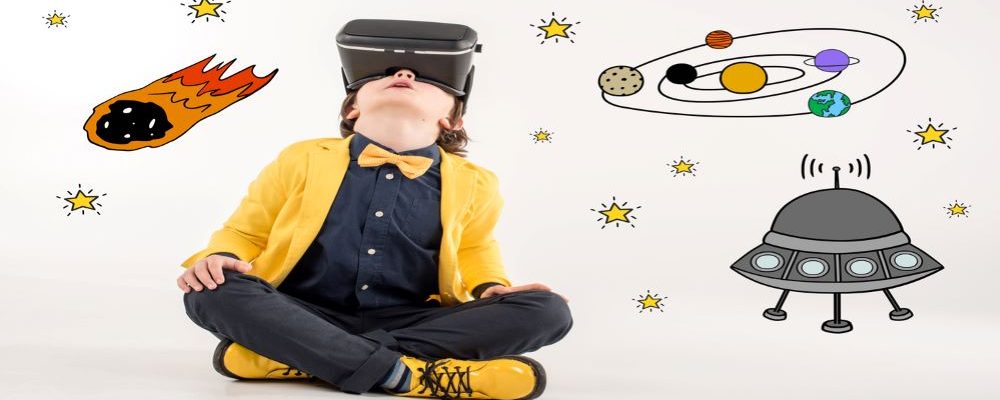
Virtual Reality in Education an Overview

Virtual Reality in Education an Overview
Education is the core of a prosperous society, and the transfer of knowledge has been a priority since the beginning of civilization. People are constantly looking for ways to transfer knowledge more easily, quickly, and effectively. In this digital age, there is an opportunity to make better learning possible with technology. Virtual reality (VR) is the future of education. Most people have heard of virtual reality (VR), but many do not know what it is or how it is used in learning and education.
What is Virtual Reality Learning?
Virtual Reality, or VR, is advancing education and schools are adopting this technology. VR allows students to experience destinations around the world without having to leave the classroom. Imagine being able to have students sit at their desks and explore the whole world. Students can explore the world in a room, what a beautiful concept, isn’t it?
How its Work?
360 VR is commonly used in education. With this type of VR, specialist cameras and equipment capture real locations. The footage is then taken back to the studio, where it is then converted to VR content. VR content can be viewed on VR headsets or projected on the walls of so-called immersive classrooms. 360 VR is used in education to teach students about the world around them. What’s more, virtual reality has a unique ability to motivate and engage students. Students can experience places which are not directly accessible or expensive. In this way, teachers and schools can open up a whole new world of possibilities of learning.
Categories of VR Educational Experiences
Virtual Field Trips
Virtual field trips can help you gain more knowledge about places and times, as well as learn more about history and geography. VR helps to know about any place in the world, to understand the geographical feature, and to create a better experience than just reading.
High-tech Education
Virtual Reality is an excellent tool for high-tech training in fields like the military and medicine. For medical students studying anatomy, for example, the most difficult issue in comprehending the body in three dimensions and how different systems interact.
Internships
Another advantage of using virtual reality in education is that it may assist students to get job experience. It enhances people’s capacity to see themselves in other people’s work. Students may explore one day in a person’s career, discover who is studying, and learn what a person likes and dislikes about their profession through career excursions.
Group Studies
We still obtain some of the most valuable information through group action and conversation. By allowing students to connect with one another, virtual reality education allows them to socialize their learning experiences. Through avatars and pardoned facial expressions, people may come together to converse, cooperate, and learn from one another.
Distance Learning
We can use virtual reality to bridge the gap between professors and students. Distance learning systems that use virtual reality can keep professors and students in the same room by allowing teachers to teleport into the VR environment and coach students through their experiences.
Pros of VR in Education
- It allows to create test scenarios, & experiments that would be impossible to execute in a real-world case.
- It gives you the confidence to carry out technological processes and tasks.
- Multiple repeats of events, experiments, or scenarios are possible.
- VR saves money and time by eliminating the need to set up physical test stations.
- Reduces the use of natural resources.
- VR may be adapted and used in a variety of disciplines and areas of education.
- It improves the capacity to interact & work with persons who are located in different places.
Cons of VR in Education
- Virtual reality frequently has limited scope or a scarcity of ready-to-use instructional scenarios.
- If faults and blunders are made, there are no actual penalties.
- It’s possible that people will become hooked to the virtual environment.
- VR limits human interactions and experiences.
- It is very likely that the measures conducted will become habitual.
- Users may have health issues as a result of their use.
- It is possible to ignore the fundamental rules of physics.
Conclusion
Sapizon Technologies is a leading Virtual Reality App Development company. Use of virtual reality in education has become increasingly popular, and Sapizon has a team of experts that can design and develop engaging educational programs for students in different languages. We have completed 250+ successful projects for our clients in a short period of time, making us a dependable company.